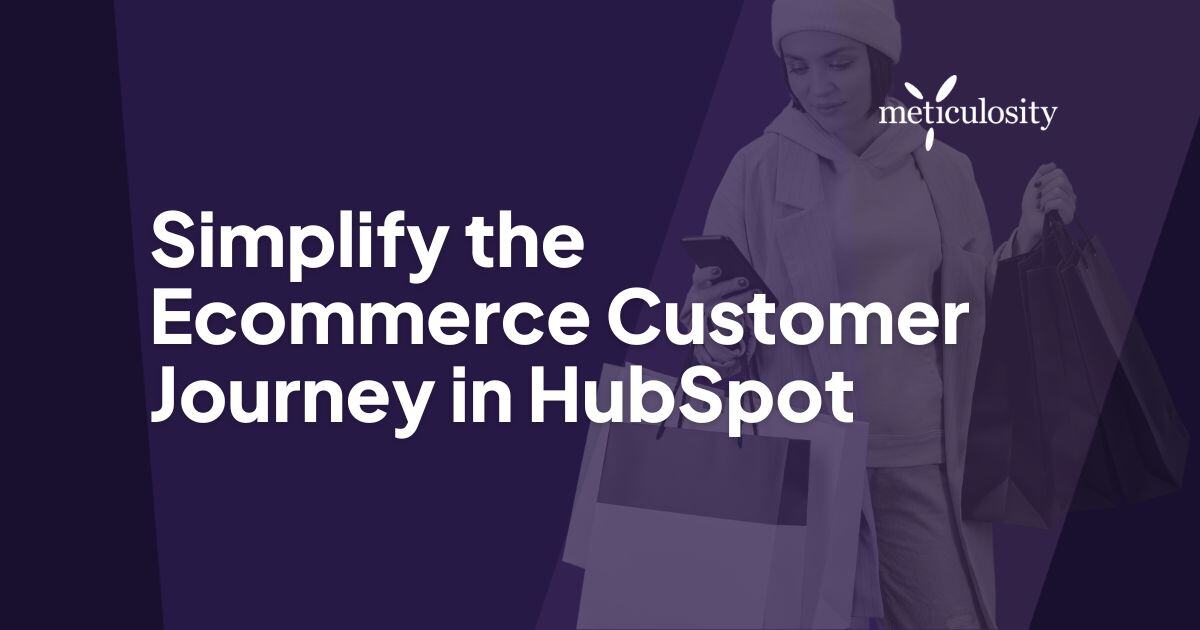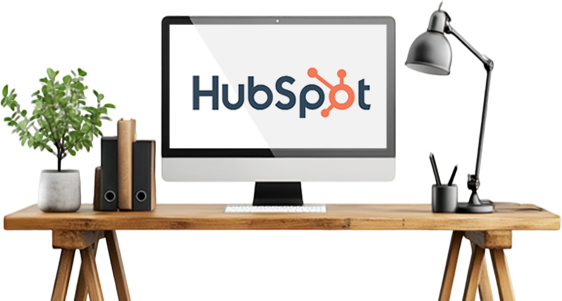Creating a seamless customer journey is essential for ecommerce businesses looking to convert leads into loyal customers. With HubSpot’s CRM and marketing automation tools, businesses can map and optimize every step of the customer journey, from the initial interaction to repeat purchases, all in one place. By using HubSpot’s native ecommerce integration, businesses unlock advanced ecommerce capabilities directly within the platform—no need for third-party tools.
This guide will show you how to harness the power of HubSpot to streamline your ecommerce operations, increase conversions, and deliver a unified experience for your customers.
Ready to attract, engage, and checkout every customer? Let's get started.
Mapping the Customer Journey with HubSpot
Understanding and optimizing the customer journey is key to delivering value at every touchpoint. HubSpot’s CRM enables businesses to capture leads and track every interaction, from initial interest to final purchase and beyond.
Here’s how to map and enhance the customer journey:
- Lead Capture: Automatically collect lead information from forms, subscriptions, or even abandoned carts, ensuring no potential customer is missed.
- Lead Nurturing: Use HubSpot’s workflows to send personalized emails, recommendations, or incentives, guiding leads toward completing their purchase.
- Conversion Tracking: Monitor real-time data on which marketing strategies or channels lead to conversions, giving you clear insight into what’s working and what needs refining.
- Post-Purchase Engagement: Use automation to deliver personalized follow-ups, including thank-you emails, product recommendations, or special offers for repeat purchases.
Streamlining the Ecommerce Experience with HubSpot
With HubSpot’s native ecommerce tools, you can unify data, simplify operations, and create a streamlined customer journey without relying on third-party platforms like Shopify or WooCommerce.
Here’s how HubSpot optimizes the ecommerce experience:
- Real-Time Data Syncing: Orders, inventory, and customer interactions are synced in real-time, keeping customer data up-to-date and enabling personalized engagement.
- Enhanced Reporting and Insights: HubSpot’s reporting dashboard tracks everything from sales performance to customer behavior, providing a holistic view of your business’s success.
- Personalized Customer Experiences: With all data in one place, businesses can deliver highly personalized product recommendations, upsell strategies, and follow-ups based on customer preferences and purchase history.

Example: Recovering Abandoned Carts with HubSpot
One of the most critical moments in ecommerce is cart abandonment, but with HubSpot’s integration, it’s easier to turn these lost opportunities into conversions.
Here’s how it works:
- Automated Follow-Up: When a customer abandons their cart, HubSpot syncs the data and triggers a personalized email reminding them of their items and offering an incentive to complete the purchase.
- Multi-Channel Retargeting: Set up additional follow-ups through SMS or retargeting ads, all managed within HubSpot, to give them another nudge.
- Boosting Conversions: Studies show that personalized abandoned cart emails can lead to a 28% recovery rate. HubSpot makes this process effortless by syncing data and automating personalized recovery campaigns.
Maximizing Customer Engagement and Sales
HubSpot’s native ecommerce tools allow businesses to take personalization to the next level without additional systems or manual effort. Here’s how it boosts engagement:
- Automated Product Recommendations: Suggest complementary products based on a customer’s browsing history or previous purchases.
- Upsell Opportunities: During the checkout process, HubSpot can automatically offer premium or upgraded products tailored to each customer.
- Post-Purchase Automation: Set up post-purchase workflows to thank customers, request reviews, and offer discounts for future purchases—keeping customers engaged long after they’ve bought.
Conclusion
By using HubSpot’s native ecommerce integration, businesses can streamline the entire customer journey—from lead capture to post-purchase engagement—without the need for third-party platforms. With everything centralized in one platform, businesses can scale their operations, automate key processes, and deliver personalized experiences that convert leads into loyal customers.
FAQs
1. How does HubSpot help streamline the ecommerce customer journey?
HubSpot provides an all-in-one platform that allows businesses to capture leads, track interactions, and automate follow-ups, creating a seamless customer journey.
- Automatically capture leads and track interactions.
- Use personalized workflows for lead nurturing and post-purchase engagement.
2. What features does HubSpot offer for recovering abandoned carts?
HubSpot’s native ecommerce tools allow businesses to automate personalized follow-ups for abandoned carts, turning lost opportunities into conversions.
- Set automated emails to recover abandoned carts.
- Use multi-channel retargeting through SMS or ads to increase recovery rates.
3. How does HubSpot's native ecommerce integration personalize customer experiences?
HubSpot unifies data in one platform, allowing businesses to deliver personalized experiences through tailored product recommendations and upsell opportunities.
- Offer personalized product recommendations based on behavior.
- Upsell products during checkout to increase average order value.
4. How does HubSpot sync real-time ecommerce data?
HubSpot’s native ecommerce integration syncs real-time data for orders, inventory, and customer interactions, ensuring accurate and up-to-date records for personalized engagement.
- Keep customer and order data synchronized in real-time.
- Gain enhanced reporting for performance insights through HubSpot’s dashboard.
5. Can I use HubSpot to track customer behavior and sales performance?
Yes, HubSpot’s reporting dashboard offers insights into customer behavior, sales trends, and conversion metrics, helping businesses optimize their ecommerce strategies.
- Analyze customer behavior for targeted marketing.
- Access real-time sales performance data.







